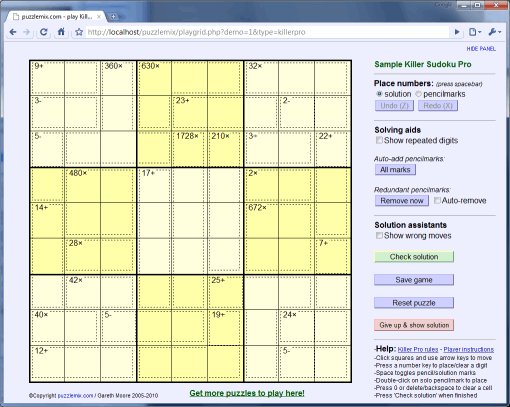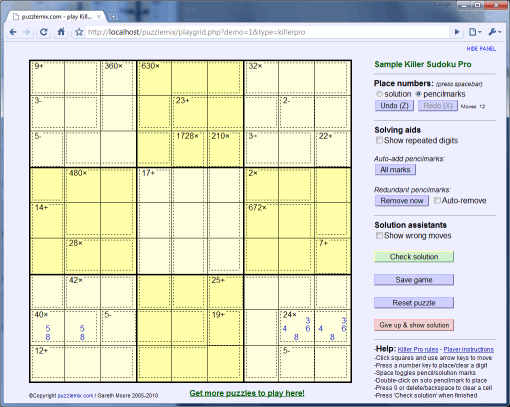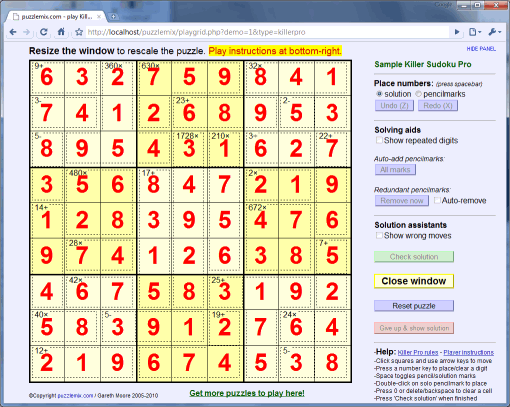The rules of Killer Sudoku Pro are based on those of Sudoku, since you must place each of the numbers 1 to 9 (or 1 to whatever the width of the puzzle is) into each of the rows, columns and bold-lined boxes. Additionally, however, you must also place the numbers so that each dashed-line 'cage' results in the given total when the stated operation is applied between all the numbers in the cage. For subtraction and division you should start with the largest value in the cage and then subtract/divide by the rest.
If you're trying to solve a "Mystery Killer" puzzle then the '?' operator indicates that you don't know whether the operation is +, -, × or ÷ - it's up to you to work out which (and occasionally more than one operation may fit).
As an example, consider the first two squares on the first row of the puzzle below. They must add up to 9, since the clue is "9+". Meanwhile the two squares directly below them must result in 3 when the smaller is subtracted from the larger, since the clue is "3-". The solution to "3-" might therefore be 4 and 7, since 7-4=3.
You cannot repeat a number within a cage, so this means for example that the solution to "4+" must be 1 and 3, not 2 and 2 (although 2 and 2 would be disallowed by the standard rules of Sudoku in any case).

You can start to solve these puzzles by working out what numbers can fit in the more restricted cages. For example at the bottom of this puzzle consider the options for 40x and for 24x. The former must be solved with 5x8, whilst the latter could be either 3x8 or 4x6, as shown in the picture below. However you could then note that since we must be using an 8 in that row to solve the 40x, 3x8 can't be the solution to the 24x and so that in turn must be 4x6. And so on.

It's definitely worth noting that you rarely need to do any 'difficult' maths - for example in this puzzle there are large value cages in the middle, such as the 1728x here. However you can see immediately that there can't be a "5" in that cage, since no whole number multiple of 5 can end in 8, and in fact that's the only maths you need to do with that particular cage for this puzzle.
Continue to solve the puzzle using both regular Sudoku logic and a range of possible deductions unique to Killer Sudoku Pro, and you will eventually reach the final result. By using straightforward logical reasoning like this every killer sudoku pro puzzle can be solved to find its unique solution. There is never any need to guess. When the puzzle is fully-solved you will have 1 to 9 in each row, column and 3-by-3 shape, and each cage will result in the value at its top-left when the given operation is applied:
